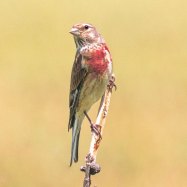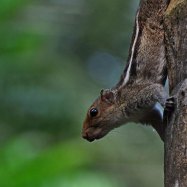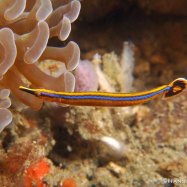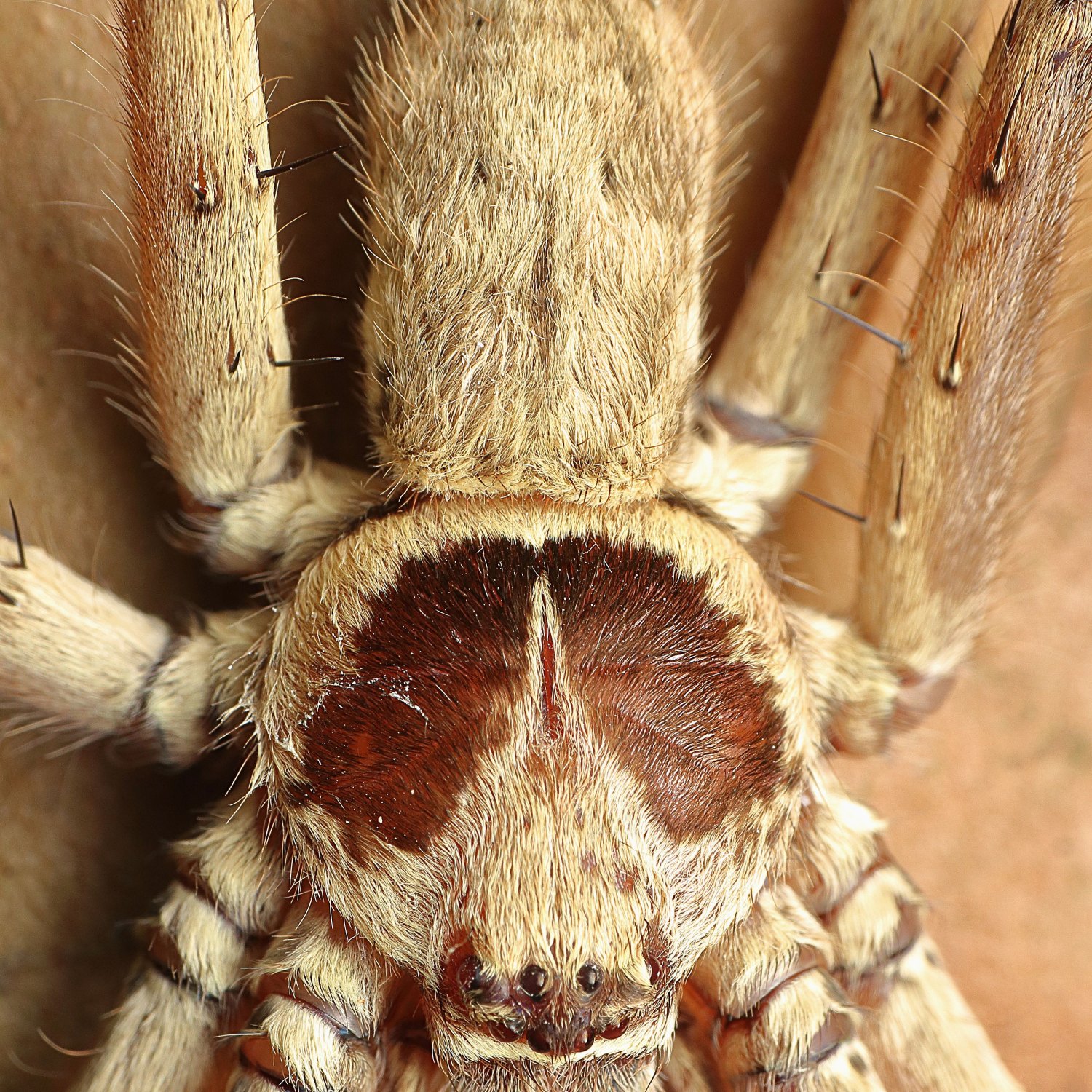
Cane Spider
Approximately 2-3 inches (5-7 centimeters)
The Cane Spider, also known as a giant crab spider, is a common sight on trees, walls, and human structures. With an average length of 2-3 inches, this spider belongs to the Sparassidae family and has a medium-sized, elongated body with long legs. Don't be alarmed if you spot one, as they are harmless and actually beneficial as they prey on insects and pests.
Animal Details Summary:
Common Name: Cane Spider
Kingdom: Animalia
Habitat: Tropical and subtropical regions
The Fascinating World of the Cane Spider: Africa's Mighty Hunter
Deep in the tropics of Africa, Asia, and the Pacific Islands, a predator lurks in the shadows, patiently waiting for its next meal. Known for its impressive hunting abilities and intimidating appearance, the Cane Spider is a fascinating creature that deserves our attention and admiration. In this article, we will delve into the amazing world of the Cane Spider and discover what makes it one of the most unique and interesting arachnids on the planet.The Basics: Scientific and Common Name
The Cane Spider, also known by its scientific name Heteropoda venatoria, belongs to the kingdom Animalia, the phylum Arthropoda, and the class Arachnida Cane Spider. It is a member of the order Araneae, which includes all spiders, and the family Sparassidae, commonly known as huntsman spiders. Its scientific name, Heteropoda, translates to "different foot," referring to its uniquely shaped feet, while venatoria means "huntress," highlighting its deadly hunting skills.Habitat and Geographical Distribution
The Cane Spider can be found in tropical and subtropical regions around the world, with a particular concentration in Africa, Asia, and the Pacific Islands. It has been reported in countries such as Indonesia, India, China, and Australia, among others. This widespread distribution is due to its adaptability to various environments, from forests to urban areas. You can find the Cane Spider in trees, walls, and even in human structures such as homes and sheds.Feeding Method: Carnivorous Hunter
As a hunter, the Cane Spider's mode of feeding is carnivorous, meaning it feeds on other animals. It mainly preys on insects, but it has been known to hunt small reptiles and amphibians as well. Unlike other spiders that build webs to catch their prey, the Cane Spider is an active hunter, using its incredible speed and agility to chase down and capture its meals Chicken. It is an opportunistic feeder, patiently waiting for its prey to come within reach before launching a surprise attack.Appearance: Coloration and Body Structure
One of the most striking features of the Cane Spider is its size. While its body length varies from 2-3 inches (5-7 centimeters), it has a leg span of up to 6-7 inches (15-18 centimeters), making it one of the largest spiders in the world. Its body is elongated, with a flattened cephalothorax (the body part where the head and legs attach), giving it a unique body shape.The Cane Spider's coloration varies, but it is commonly seen in shades of brown or beige, with darker markings on the legs. This coloration helps it blend in with its surroundings, making it a skilled hunter and a master of disguise.
The Cane Spider's Hunting Techniques
As mentioned earlier, the Cane Spider is an active hunter, meaning it does not use webs to catch its prey. Instead, it relies on its incredible hunting skills, lightning-fast reflexes, and keen eyesight to locate and capture its meals. It can also detect vibrations from potential prey, aiding in its hunting abilities.The Cane Spider is a nocturnal hunter, meaning it is most active at night. It spends its days hiding in crevices or under bark, emerging at night to hunt. It uses its impressive speed and agility to chase down its prey, and once caught, it injects venom into its victim, immobilizing it before consuming it.
Cane Spider vs. Humans: Who is the Real Threat?
It is no secret that spiders, in general, are feared by many, and the Cane Spider is no exception. With its large size and scary appearance, it is understandable why this arachnid can cause some anxiety for humans. However, despite its intimidating reputation, the Cane Spider is relatively harmless to humans.The Cane Spider's venom is not known to be harmful to humans, and it does not possess a potent enough venom to cause significant harm. In fact, the Cane Spider is beneficial to humans as it helps control insect populations, including disease-carrying mosquitoes. It is also not known to be aggressive and would only bite if provoked or threatened.
Myths and Legends: Separating Fact from Fiction
With such a unique and fascinating appearance, it is no surprise that the Cane Spider has been the subject of various myths and legends. One such myth is that the Cane Spider is a deadly predator to humans, causing severe harm. As we have already established, this is not entirely accurate, and the chances of a Cane Spider causing harm to humans are very slim.Another popular myth is that the Cane Spider is attracted to fire, and its bite can cause a burning sensation. While the Cane Spider is indeed attracted to light, its bite does not produce a burning sensation, and it would only bite in self-defense if threatened.
The Cane Spider: A Creature to be Respected and Admired
Despite its fearsome appearance, the Cane Spider is a remarkable creature that deserves our respect and admiration. With its incredible hunting abilities, adaptability, and role in controlling insect populations, it plays a vital role in maintaining the balance of ecosystems. So the next time you encounter a Cane Spider, instead of fearing it, take a moment to appreciate this remarkable hunter and its place in the natural world.

Cane Spider
Animal Details Cane Spider - Scientific Name: Heteropoda venatoria
- Category: Animals C
- Scientific Name: Heteropoda venatoria
- Common Name: Cane Spider
- Kingdom: Animalia
- Phylum: Arthropoda
- Class: Arachnida
- Order: Araneae
- Family: Sparassidae
- Habitat: Tropical and subtropical regions
- Feeding Method: Carnivorous
- Geographical Distribution: Africa, Asia, and the Pacific Islands
- Country of Origin: Various
- Location: Trees, walls, and human structures
- Animal Coloration: Varies, typically brown or beige
- Body Shape: Medium-sized, elongated body with long legs
- Length: Approximately 2-3 inches (5-7 centimeters)
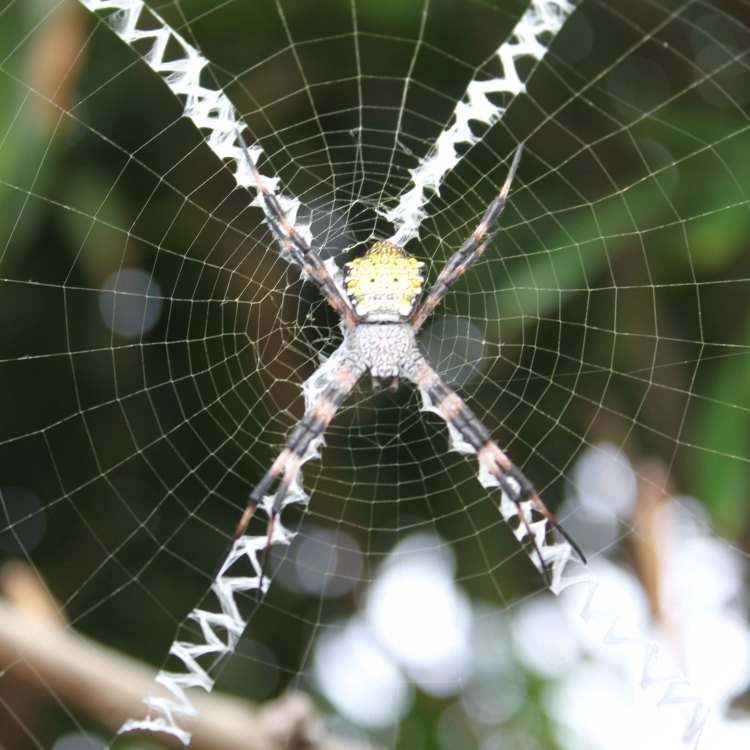
Cane Spider
- Adult Size: Approximately 2-3 inches (5-7 centimeters)
- Average Lifespan: 1-2 years
- Reproduction: Sexual
- Reproductive Behavior: Males perform a courtship dance to attract females
- Sound or Call: None
- Migration Pattern: Non-migratory
- Social Groups: Solitary
- Behavior: Nocturnal
- Threats: Habitat loss and pesticide use
- Conservation Status: Not evaluated
- Impact on Ecosystem: Help control populations of insects
- Human Use: Not used by humans
- Distinctive Features: Long legs and elongated body
- Interesting Facts: Cane spiders are often referred to as huntsman spiders and are known for their speed and agility. They are commonly found in homes in tropical regions and are beneficial for controlling insect populations. Despite their large size, cane spiders are generally not dangerous to humans.
- Predator: Various bird species
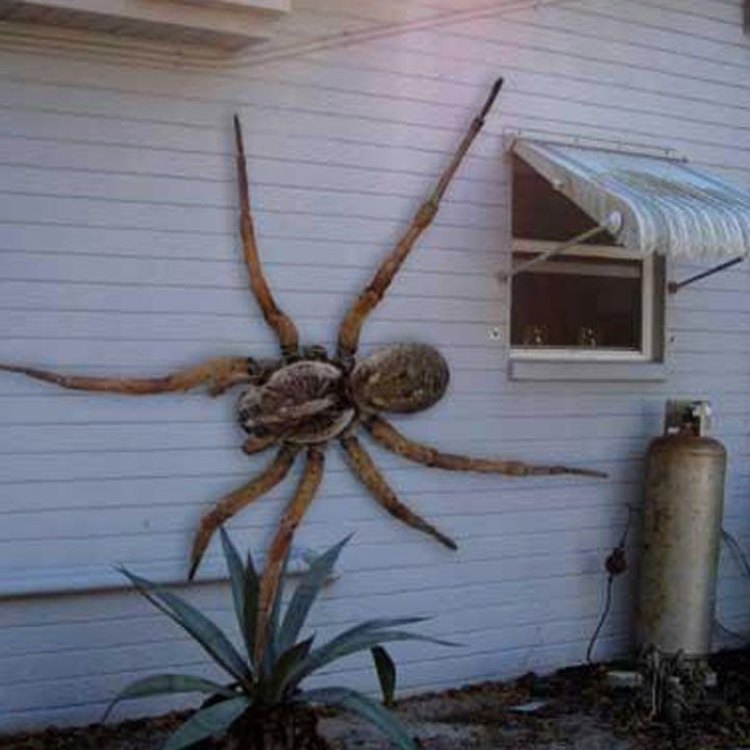
Heteropoda venatoria
Exploring the Fascinating World of Cane Spiders: The Ultimate Hunter of the Arachnid Kingdom
Welcome to the world of cane spiders, also known as huntsman spiders, where strength, agility, and stealth meet to create the ultimate hunter of the arachnid kingdom. With their distinctive features and unique reproductive behavior, these spiders have captured the attention and curiosity of both scientists and the general public. In this article, we will delve into the fascinating world of cane spiders, uncovering their fascinating abilities, threats they face, and their role in the ecosystem.Meet the Cane Spider: Size, Lifespan, and Behavior
The cane spider, scientifically known as Heteropoda venatoria, is a large and intimidating species of spider that belongs to the family Sparassidae PeaceOfAnimals.Com. Found in tropical regions around the world, these spiders can grow up to 2-3 inches (5-7 centimeters) in length, making them one of the largest spider species. They have long, spindly legs that give them an elongated body, and they are typically brown or tan in color.Cane spiders have an average lifespan of 1-2 years, during which they undergo a series of fascinating behaviors. Unlike many other spiders, cane spiders reproduce sexually, with females laying eggs after mating with a male. However, it is their reproductive behavior that truly sets them apart from other spiders. During mating, males perform a courtship dance to attract the female, using their long legs to create a rhythmic tapping on the ground. This dance is not only mesmerizing to watch but also ensures successful mating.
Hunters of the Night: Nocturnal Behavior of Cane Spiders
Despite their fearsome appearance, cane spiders are not aggressive towards humans and are mainly active at night. As nocturnal hunters, these spiders spend their days in hiding, emerging at night to hunt for prey Cardinal. With their incredible speed and agility, they can quickly chase down their prey and immobilize them with their venomous bites. This nocturnal behavior not only helps them avoid potential predators but also makes them highly efficient hunters.Surviving in Solitude: The Social Life of Cane Spiders
Cane spiders are solitary creatures, preferring to live alone rather than in social groups. They do not build webs like other spiders; instead, they rely on their speed and agility to hunt down their prey. However, there have been rare instances of cane spiders tolerating each other’s presence and living in small groups. This behavior is particularly common during the mating season when males and females may coexist for a brief period.Surviving in a Changing World: Threats to Cane Spiders
Despite their incredible adaptability and survival instincts, cane spiders face several threats in their natural habitats. One of the biggest threats they face is habitat loss due to human activities such as urbanization and deforestation. As these spiders are commonly found in homes, their habitats are continuously being destroyed to make way for buildings and infrastructure. Additionally, the use of pesticides poses a significant threat to their survival, as these chemicals can harm and even kill the spiders.The Future of Cane Spiders: Conservation Status
Currently, the conservation status of cane spiders is not evaluated, as they are not considered endangered. However, as their natural habitats are increasingly being destroyed, it is essential to monitor their populations and take steps to protect them. More research is needed to fully understand the impact of human activities on these spiders and develop effective conservation strategies.The Silent Protectors of the Ecosystem: Impact of Cane Spiders
Cane spiders may appear intimidating and even scary to some, but they play a vital role in maintaining the delicate balance of the ecosystem. As voracious hunters, they primarily feed on insects and other arthropods, helping control their populations. In tropical regions, where insect populations can be high, cane spiders are considered beneficial to humans, as they can help reduce pest infestations.Fascinating Facts about Cane Spiders
Aside from their distinctive features and unique behaviors, cane spiders have several other fascinating characteristics. Here are some interesting facts about these impressive arachnids:- They are often referred to as “huntsman spiders” due to their hunting abilities and stealthy behavior.
- Cane spiders do not produce any sound or call.
- They are non-migratory and tend to stay in their chosen habitats throughout their lifespan.
- Unlike many other spiders, they do not use webs to capture their prey.
- Cane spiders are not known to be used by humans for any specific purposes.
Predators of Cane Spiders: Who Hunts the Hunter?
Despite their formidable appearance and impressive skills, cane spiders have a few predators, most notably various bird species. Birds such as shrikes and nightjars have been observed feeding on these spiders, especially during their active hunting hours at night. Other potential predators include lizards, frogs, and other insect-eating animals.The Not-So-Dangerous Cane Spiders
It is natural to feel apprehensive and even afraid of cane spiders, given their large size and intimidating appearance. However, in reality, these spiders are not considered dangerous to humans. Their bites may cause some discomfort, but they are not known to be venomous or harmful to humans. Instead, they prefer to avoid confrontation and will only bite if provoked or threatened.In Conclusion
Cane spiders are fascinating creatures that have captured the interest of arachnid enthusiasts and researchers alike. Their long legs, unique reproductive behavior, and impressive hunting abilities are just some of the features that make them stand out in the world of arachnids. However, as humans continue to encroach on their habitats, it is crucial to understand and protect these spiders to ensure their survival in the ever-changing world. So, next time you come across a cane spider, remember to admire its fascinating abilities and appreciate its role in the ecosystem.

The Fascinating World of the Cane Spider: Africa's Mighty Hunter
Disclaimer: The content provided is for informational purposes only. We cannot guarantee the accuracy of the information on this page 100%. All information provided here may change without prior notice.



